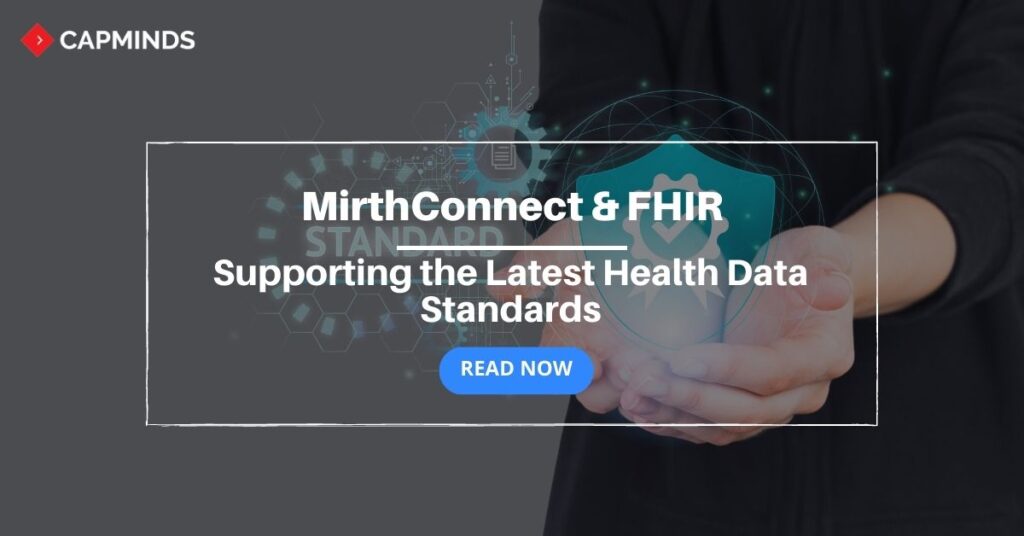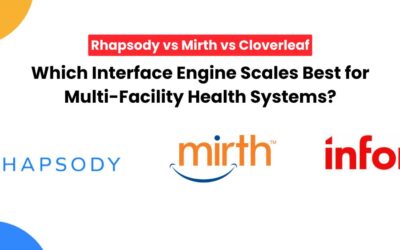Mirth Connect & FHIR: How MirthConnect Supports the Latest Health Data Standards
As healthcare technology advances, the need for a standardized way to exchange data has become increasingly important.
In response to this need, the Fast Healthcare Interoperability Resources (FHIR) standard was developed. FHIR is an open-source standard for exchanging healthcare information electronically. It is designed to be flexible, extensible, and easy to implement. MirthConnect, a popular integration engine in the healthcare industry, fully supports the FHIR standard. In this blog, we will explore how MirthConnect supports FHIR and the benefits of using FHIR in healthcare data exchange.
What is FHIR?
FHIR is a standard for exchanging healthcare data electronically. It was developed by Health Level Seven International (HL7), an organization that develops standards for healthcare data exchange. FHIR is designed to be flexible, extensible, and easy to implement.
It uses modern web technologies such as RESTful APIs and JSON to enable easy access to healthcare data. FHIR resources are the basic building blocks of the standard. They represent specific types of healthcare information such as patients, diagnoses, medications, and allergies. FHIR resources can be combined and extended to represent more complex healthcare information.
RELATED: Why is FHIR a powerful tool for Data Exchange?
Key Benefits of Using FHIR
1. Standardized data exchange
FHIR provides a standardized way to exchange healthcare data, making it easier for healthcare organizations to share information with each other. This can help improve care coordination, reduce errors, and streamline administrative processes.
2. Improved interoperability
FHIR is designed to be interoperable with other healthcare data exchange standards, including HL7 v2 and CDA. This means that organizations can use FHIR to integrate data from a wide range of systems and sources, making it easier to share information and improve care delivery.
3. Greater flexibility
FHIR is designed to be flexible and adaptable, allowing healthcare organizations to customize it to meet their specific needs. This flexibility makes it easier to integrate FHIR into existing systems and workflows and to support a wide range of use cases.
4. Faster development
FHIR is designed to be developer-friendly, with a simple RESTful API and a well-defined data model. This makes it easier for developers to build FHIR-based applications and tools, reducing development time and costs.
5. Better patient engagement
FHIR supports patient access to their own healthcare data, making it easier for patients to track their health status and share information with their healthcare providers. This can help improve patient engagement, satisfaction, and outcomes.
6. Improved analytics
FHIR provides a standardized way to capture and exchange healthcare data, making it easier to analyze and report on clinical and administrative data. This can help healthcare organizations to identify trends, measure outcomes, and improve care delivery.
7. Support for emerging technologies
FHIR is designed to be forward-compatible with emerging technologies, such as artificial intelligence, machine learning, and blockchain. This means that healthcare organizations can use FHIR to support innovative new applications and use cases, without being limited by legacy technologies or standards.
MirthConnect and FHIR
MirthConnect is a popular integration engine in the healthcare industry. It is used to exchange data between different healthcare applications and systems. MirthConnect fully supports the FHIR standard, which means that it can be used to exchange FHIR resources. MirthConnect supports FHIR through its built-in FHIR Connector. The FHIR Connector provides a simple way to exchange FHIR resources with other healthcare systems.
- MirthConnect’s FHIR Connector allows users to create and send FHIR resources to other systems
- Users can create FHIR resources using MirthConnect’s graphical interface or by importing FHIR resources from other systems
- Once created, FHIR resources can be transformed and mapped to other formats as needed
- MirthConnect’s FHIR Connector also supports FHIR RESTful APIs, which enables easy access to healthcare data using modern web technologies
MirthConnect’s FHIR Connector also supports FHIR Subscriptions. FHIR Subscriptions enable real-time notifications of changes to healthcare data. This is particularly useful in applications such as patient monitoring or clinical decision support. MirthConnect’s FHIR Subscriptions allow users to subscribe to specific FHIR resources and receive notifications when those resources are updated.
RELATED: Mirth Connect: The Trending HL7 Interface Engine [features & benefits]
Using MirthConnect with FHIR
Using MirthConnect with FHIR is relatively easy.
- First, users need to install the FHIR Connector in MirthConnect
- Once installed, users can create FHIR resources using MirthConnect’s graphical interface or by importing FHIR resources from other systems
- Once created, FHIR resources can be transformed and mapped to other formats as needed
- MirthConnect’s FHIR Connector also supports FHIR RESTful APIs, which enables easy access to healthcare data using modern web technologies
- Finally, MirthConnect’s FHIR Subscriptions allow users to subscribe to specific FHIR resources and receive notifications when those resources are updated
Best practices for using MirthConnect with FHIR
MirthConnect is a powerful tool for exchanging healthcare data, and its support for FHIR makes it an ideal choice for healthcare organizations looking to adopt the latest healthcare data exchange standards. Here are some best practices for using MirthConnect with FHIR:
1. Stay up to date with FHIR releases
FHIR is a constantly evolving standard, and new versions and updates are released regularly. It’s important to stay up to date with the latest releases and updates to ensure that your MirthConnect implementation is using the latest FHIR features and capabilities.
2. Plan your FHIR implementation
Before implementing FHIR in your MirthConnect environment, it’s important to plan your implementation carefully. This includes identifying the FHIR resources you will be using, the systems you will be exchanging data with, and any customizations or extensions you may need.
3. Use FHIR profiles
FHIR profiles provide a way to define specific subsets of FHIR resources that are tailored to specific use cases. Using FHIR profiles can help ensure that the data you are exchanging is consistent and structured in a way that is appropriate for your use case.
4. Test your implementation
Before deploying your FHIR implementation in a production environment, it’s important to thoroughly test it in a development or testing environment. This can help identify any issues or errors that may arise during the implementation process and ensure that your implementation is working correctly.
5. Consider using FHIR servers
FHIR servers provide a centralized repository for FHIR resources, making it easier to manage and exchange healthcare data. MirthConnect supports FHIR servers and can be configured to use them as a data source or destination.
6. Use MirthConnect’s built-in FHIR capabilities
MirthConnect’s built-in FHIR capabilities, such as the FHIR Connector and FHIR Subscriptions, provide a powerful and flexible way to exchange healthcare data using FHIR. It’s important to take advantage of these capabilities to ensure that your implementation is efficient and effective.
7. Train your staff
Finally, it’s important to train your staff on FHIR and MirthConnect to ensure that they are familiar with the latest healthcare data exchange standards and best practices. This can help ensure that your implementation is successful and that your organization is able to take full advantage of the benefits of FHIR and MirthConnect.
Healthcare Interoperability Services from CapMinds
CapMinds offers you the smartest and safest cloud security and interoperability services across healthcare platforms. Our cloud management & operations, highly scalable features, secure cloud, system patching, and version upgrade will take you on the top run. We offer all kinds of integrated services across various health systems and platforms like Mirth Connect along with unique customization and 24/7 support.
Our medical device integration, healthcare cloud, and cybersecurity solutions cover health tech startups, the federal government, multi-specialty practices, large healthcare practices, and small clinics.
CapMinds’ Interoperability and compliance services cover your patients’ health data with maximum security, privacy, and confidentiality. We update ourselves with the latest versions like HL7 Version 2, Version 3, FHIR API, SMART on FHIR, CDA, X12, and security standards. CapMinds offers the best HL7 integration and HL7/FHIR interface development services for the federal government, health tech startups, laboratories, clinics, and practices.
“Unite with us to get the maximum benefits of our interoperability services”




